This is technically the third article in a discussion I have been having about why we are busy, and how we fill our time. The first article is ‘Why So Busy‘, the second was “Disconnected: Part 1“.
I find infographics help prove points. Something about seeing a visual representation of an idea helps reinforce it in a way that just reading stats does not. It also makes for a rather fun and easy way to compare various concepts that can help drive a point home. One of the best illustrations of this over the years has been an article done by Tim Urban called ‘The Tail End’. It is a playful examination of the time we have remaining alive, and also how we spend it. The punchline is rather poignant, and really helps put things in perspective. Read it here.
This week I thought it might be interesting to look at how much time I actually spend on various tasks.
For example, I find that if I put a whopping ten minutes into some intentional stretching every day, that I can usually get my front splits back within about two weeks of work. Mind you, I have a background in having been flexible, but it is always entertaining that with a bit over 2hrs of actual work over the course of a couple weeks I can get a lot done. If I keep it up, they actually look reasonably good by the end of a month.
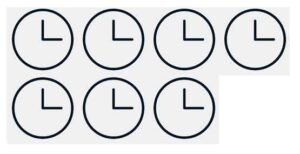
140min* = front splits
*each clock is equal to 20min.
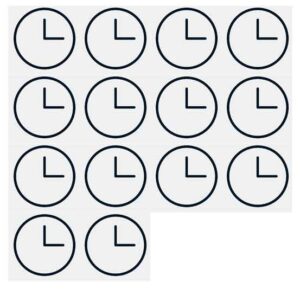
280min = nice front splits
When it comes to something like learning languages, (an item that many people talk about, but never really act on) the time input for a decent capacity with a language isn’t actually terrible. Pimsleur, which I have used successfully a number of times, takes about 45hrs to complete. Most of the courses consist of three levels, each level containing 30 classes, and each class taking 30min. So, if one were to do two 30min courses a day you would arguably be conversationally fluent in about a month and a half.
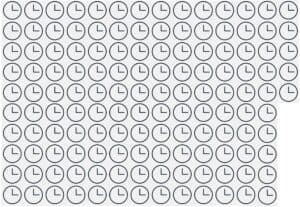
2700min = I speak Japanese
This past month at the facility we have been running a challenge for people to do 100reps of any exercise/movement they would like. This is in part to just get exposure to some volume, but also an easy way to encourage people to do something outside of the days they are in the gym. It is pretty simple, but it is actually interesting the improvements in strength that I have noticed with just doing 100 of various exercises. Push-ups I can usually do in 3-4 sets of 30-40reps over the course of the day. 30 pushups takes me about 45s. So to get in 120 pushups and get some extras I can do that with about 3min a day. If I keep that up for a month it is about 90min of actual work.

90min = So much fitness from pushups
I just cornered Colin, a coach who teaches handstands at the gym, and asked how many minutes on your hands it takes to learn to do a handstand. For the sale of the numbers, we are assuming that any kind of handstand for 5s counts (even if it is a filthy banana-stand). Colin figured that if an average person is instructed properly, and has some good cues, that most people can likely learn to do a basic handstand in about 10-12 classes. Yet when pushed for actual time on the hands, he said that the goal in 45-60min is to get students to spend 10min on their hands. So 120min. Mind you, probably best to spread it over a month.
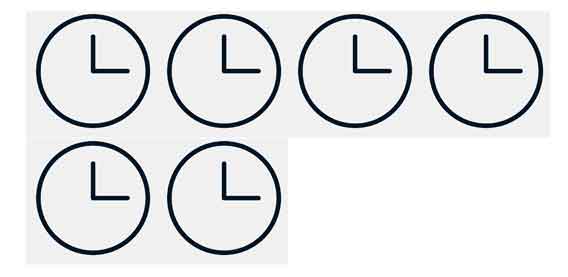
120min = A handstand! Who cares about pushups!
So if we added up all the items I just touched on, it is arguable that in about 3190min I should be able to speak Japanese in a handstand, and come down comfortably into the splits. So 53hrs spread over let’s say 2months would boil down to 53min a day. Which ironically, is less than the average amount of time I spend on Whatsapp everyday.
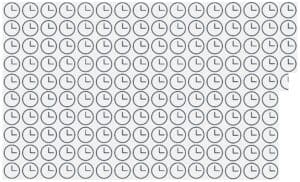
3190min = I can do a Japanese split handstand (and the pushups I don’t care about, rather easily).
So let’s take a look under the hood at our codependent relationships with our phones (connected devices) that we go nowhere without. The data out there says that the current global average use of screens connected to the internet is 6hrs and 58min a day. It is higher in North America, with us hitting around 7hr and 4min. There are obviously some differences based on demographics, for example most Gen Zs around the globe use their phone for 9hrs a day.
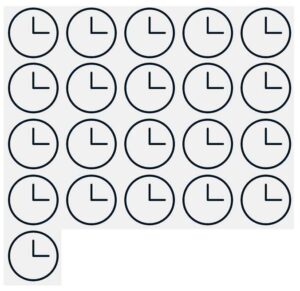
424min = Daily average phone usage.
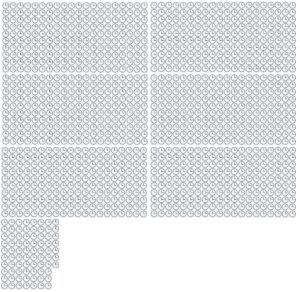
25540min = 2months usage. On average.
However, who cares about averages. Let’s look at my life. I am a business owner with a couple different projects on the go, no kids, and a healthy adult relationship which has actually lasted over two years. I would say that since covid I work too much, don’t play enough, but on the whole enjoy my life and enjoy the time I get with people. However, I regularly complain that I don’t have enough time for all the projects I am juggling. So let’s see how my screen time boils down.
My average daily phone screen time* is 3hrs and 15minutes (195min).
That is 1365min a week, 5460min a month, and about 10920min over the same two months I could learn my Japanese handstand split in.
*This is for the record, also not counting time I spend on computers, which while certainly not as high as some people, certainly adds to my time on devices.
The break down is that I use messaging apps for about 2hrs a day, chrome for another 20min, and then a rough spread between music apps (which run with the screen off), youtube, IG, email, etc.
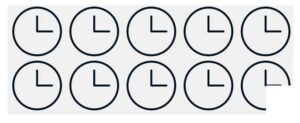
195min = My daily average.
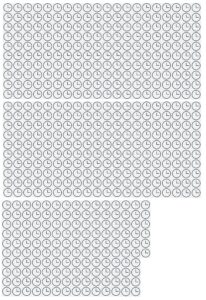
10920min for the same two months I got my handstand split in*.
*7,730min more spent on my phone than it would take to learn to speak conversational Japanese, do a handstand, get the splits, and do a bunch of stupid pushups.
I am aware that I could likely turn my phone off all day and really not miss out on much. As a matter of fact, I have been doing that for the past few days. Other than the inconvenience of not being able to google random things I don’t need to know, and not being able to play music quite so easily, my life is just better. That is just the honest truth. My life doesn’t ever really have much urgency in it, and certainly nothing that couldn’t wait. So I could claim back almost 100hrs of my life every month if I time warped myself back two decades when phones were just starting to be a common item in people’s lives.
Now, while it is fun to map out the time spent on phones and apps against some real life skills, it isn’t actually the point. There are likely a handful of people who can live life at a red line of productivity, but as my friend Erik pointed out, most people aren’t actually going to take any number of free hours and suddenly use them in a productive way. I agree with this, however while it could be great, I don’t actually think that people should reclaim that time and suddenly try and become artists, or long distance runners, or hand balancers. Rather I would be hopeful they would embrace the empty space.
Twenty years ago if you were in a line up you just waited. Maybe you flirted with a stranger (or put up with a stranger trying to flirt with you). Maybe you day dreamed. When you pushed an elevator button, you just had to stand there with nothing to do. Our every day life was filled full of empty spaces like this that were boring, unfulfilled, phone free moments, which weren’t busy. I think that might be the most precious thing that has been stolen from us; the empty spaces. It is out of the boredom that we came up with creative ideas. It was out of being lonely that we decided to go looking for an actual human being to talk to.
The reality is that it isn’t relaxing to stare at your phone. It isn’t down time. It is just staring at a tiny black box with lights that flashes at you. It is hyper stimulating, ruins your sleep, masquerades as your friends, tries to make you angry, distracts you from deep work, and is continually trying to sell you things. If you circle back to the first article in this series, I posited that being busy is something we have created through filling our empty spaces. I think the data here proves this to be the case.
So the call to action is to just turn your phone off more often. Thats it. Maybe you will use the minutes you normally spend in the morning doom scrolling to learn to do a handstand. Or maybe rather than spending 128min a day on TikTok (the highest daily average for app usage, though youtube is just behind at 122min) you could actually spend two hours laughing with a real life human being, or going for a walk, or listening to music, or watching the wind in the trees.
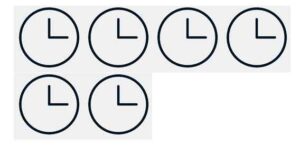
120min = average time spent on Tik Tok (or if you are between 25-40, what you spend on Youtube).
I think that an honest look at one’s screen time can be useful (if perhaps a little depressing). The trifecta of laptop/tv/phone puts a shiny bright box in front of most people for over half their waking hours. That being said, maybe I am an outlier in how useless my phone time is. However, my guess is that most people aren’t actually using them for anything important. The doom scrolling news articles to be informed is actually just as useless and watching Tik Tok videos, it is just marketed to a different demographic. In the end, both are just getting eyes on a device. The only people I know these days who actually deal with real urgent situations, are some doctors. These doctors are given pagers in case their phones are off (they often aren’t really allowed out of the hospital). The majority of things that we are engaged with on our phones are just noise. Reviews of products we don’t need. Videos of other people’s fake lives. Biased news articles giving skewed perspectives on global affairs. An echo chamber that confirms our fears and biases. The noise that is so ever present that we have begun to think it isn’t taking anything from us. This is the busyness we are addicted to. The only way to be free of it in my mind is to just turn our phones off. This is easier than you think, and far more liberating than you can imagine.
